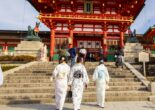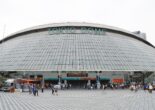Tokyo station is a labyrinth, but if you are taking the Shinkansen, the trains depart from the last platforms on the Yaesu side. But watch out: you need to get on the right Shinkansen train. There is no connection between the two directions.
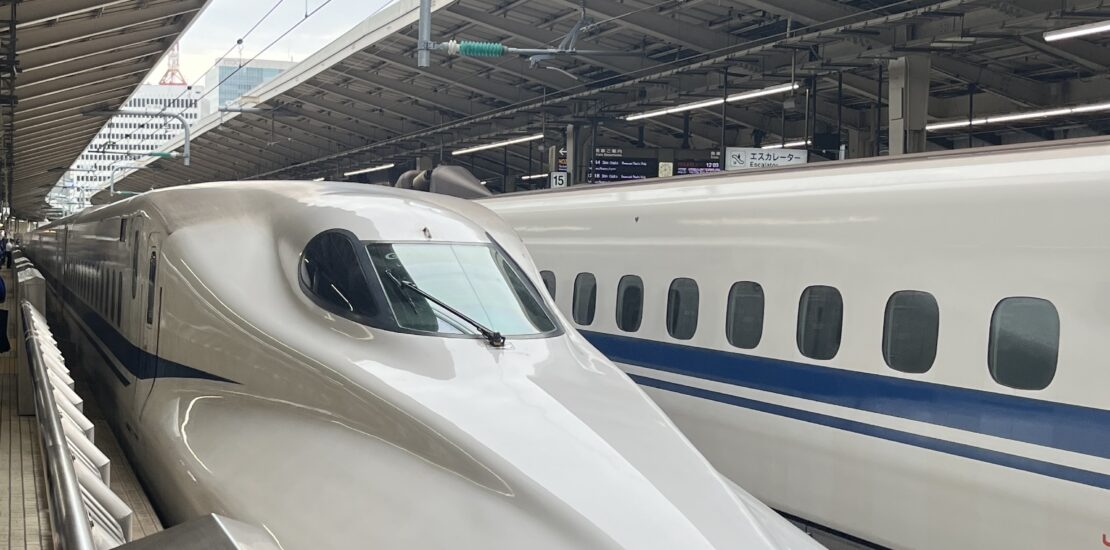
Tokyo Station is a warren of corridors and walkways, connected on different levels, with shopping courts and restaurants scattered around the walkways and track entrances. There are tracks on different levels with stairs, escalators, and elevators connecting the different platform tracks.
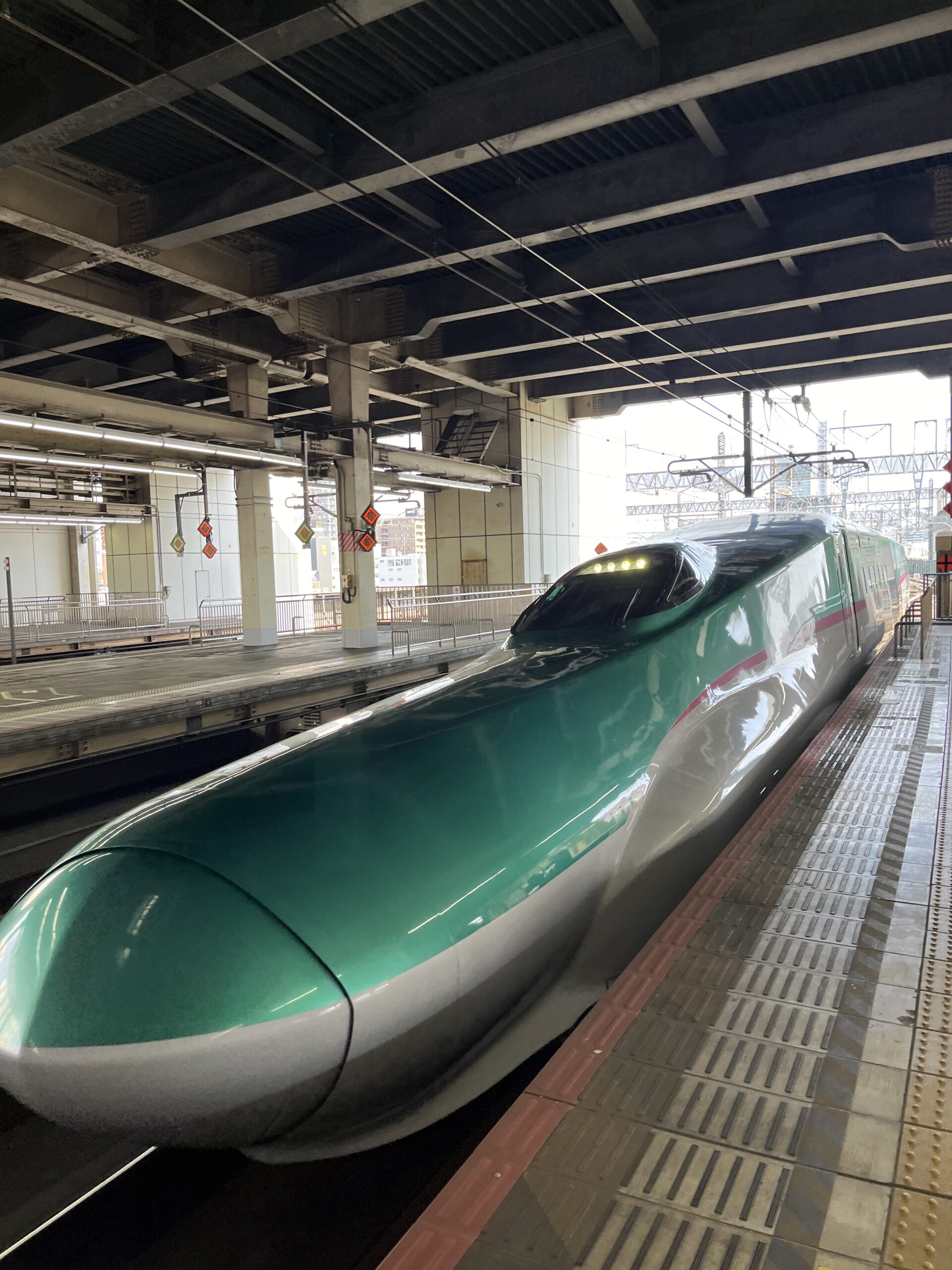
And then there is the Shinkansen entrance. When the Shinkansen was first conceived, there were different options for where to terminate the tracks. They included other stations in the Tokyo area and suburbs, partly motivated by a plan to carry freight on the Shinkansen tracks – since the number of passengers projected would not be sufficient to support the trains. But in the end, Tokyo station won out. And the number of passengers quickly made the freight plans obsolete.
320 km after the suburbs
Today, there are Shinkansen trains leaving Tokyo roughly every ten minutes. In two directions. The sleek, streamlined trains can not accelerate to their operational speed of 320 kilometers per hour (for the Tohoku Shinkansen) until they leave the Tokyo suburbs, but the speed is still several times higher than the local trains.
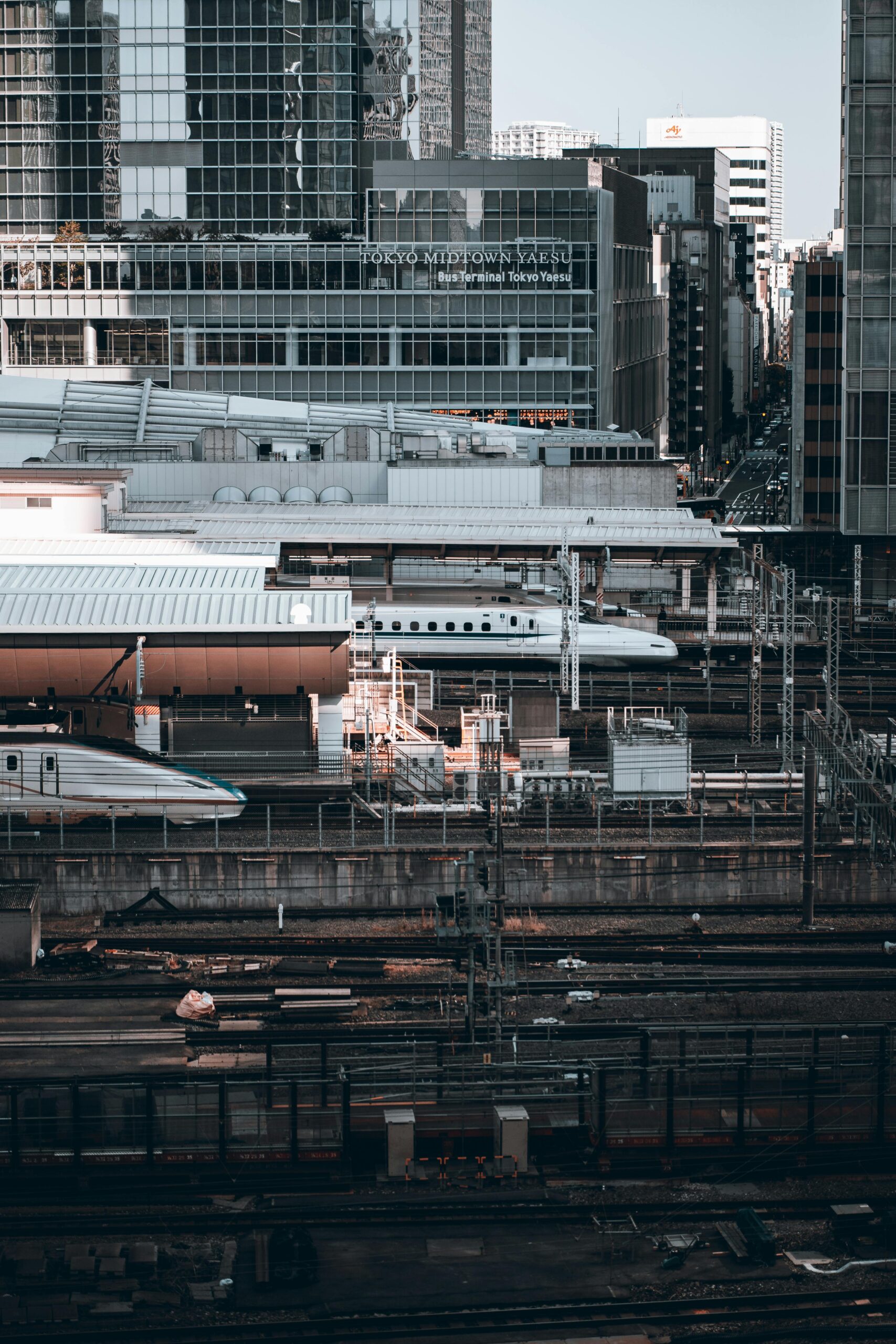
When Tokyo station was built, and rebuilt after the Second World War, Shinkansen had still not left the drawing board. The ambitious plans first conceived in the 30s had been scrapped for a new version with wider tracks and straighter rails than the old trains, which often followed the ancient roads out of Tokyo (or Edo, as it was known then).
The plans started taking serious shape in the 1950s and became real when Japan won the right to hold the 1964 Olympic Games. Several alternatives were evaluated, but Tokyo quickly won out. Not only was it already one of the most important exchange locations in the Japanese rail network, but it would have been a considerable loss of prestige to have the showcase for Japanese engineering end in, say, Tachikawa.
No room for tracks
But there was no room in Tokyo stations for additional tracks. And there was hardly space for new tracks on the route from Shinagawa to Tokyo, or Ueno to Tokyo, either. The solution was raised tracks and elevated platforms for trains and passengers, folded on top of the entrances and ticketing halls, using a platform originally allocated to other lines. With typical Japanese ingenuity, the limited space of one track had become a space for not only the tracks and passengers but for the train cleaning and maintenance as well.
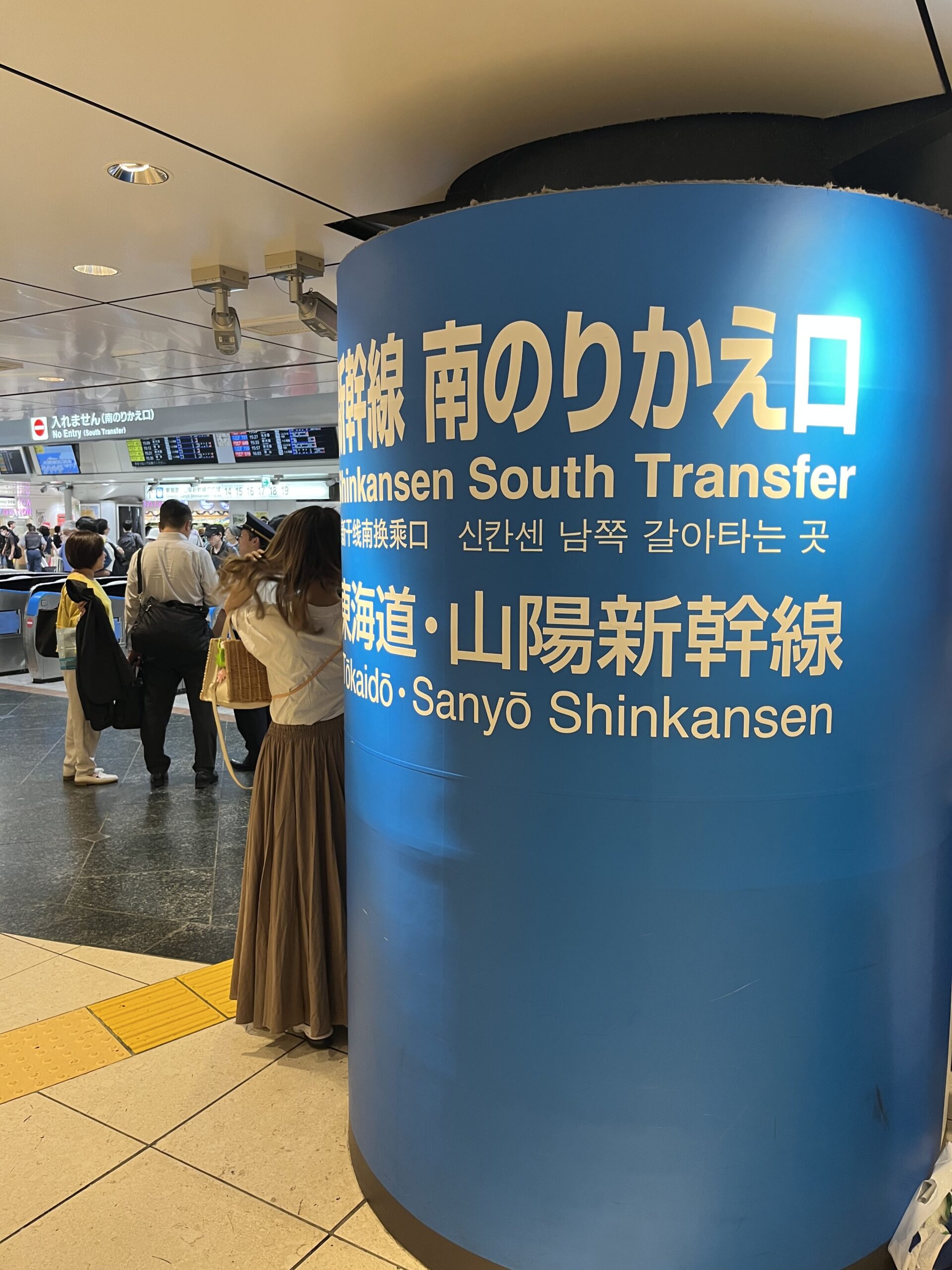
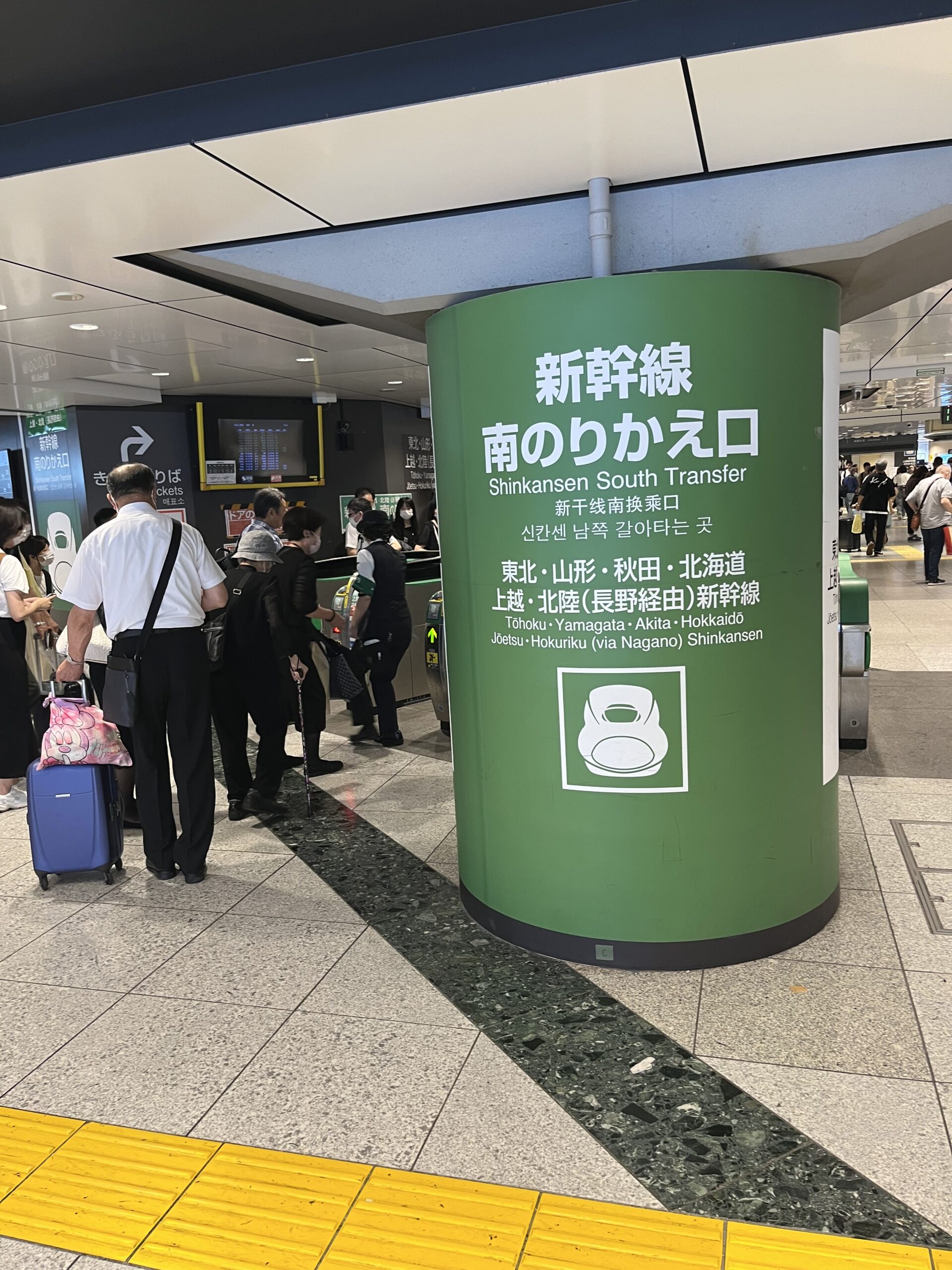
And not only in one direction but two. The Shinkansen trains from Tokyo stations go in two different directions. The original Shinkansen bullet trains went from Osaka and Kyoto to Tokyo, with the first stop after just a few minutes in Shinagawa. It took 20 years for the northbound lines to become operational (even longer for the line to Tokyo Station), but now there are trains not only all the way to the northern island of Hokkaido but also to the northwestern part of the country, to Nagano and Niigata.
No platform connection
And this is where it becomes complicated for travelers. The northbound and southbound lines are operated by different companies. They can not interoperate as they use different electrical systems, just like Tokyo and Osaka. Several other features are also different, for instance, the earthquake alarms.
When the Japanese National Railways company was split up into several operating companies, the Shinkansen belonged to JR Central. But Tokyo is in the JR East operating area. There is an ongoing dispute between the two operating companies about who owns the platforms, and they continue to be disconnected. Along with the entrance to the platforms.
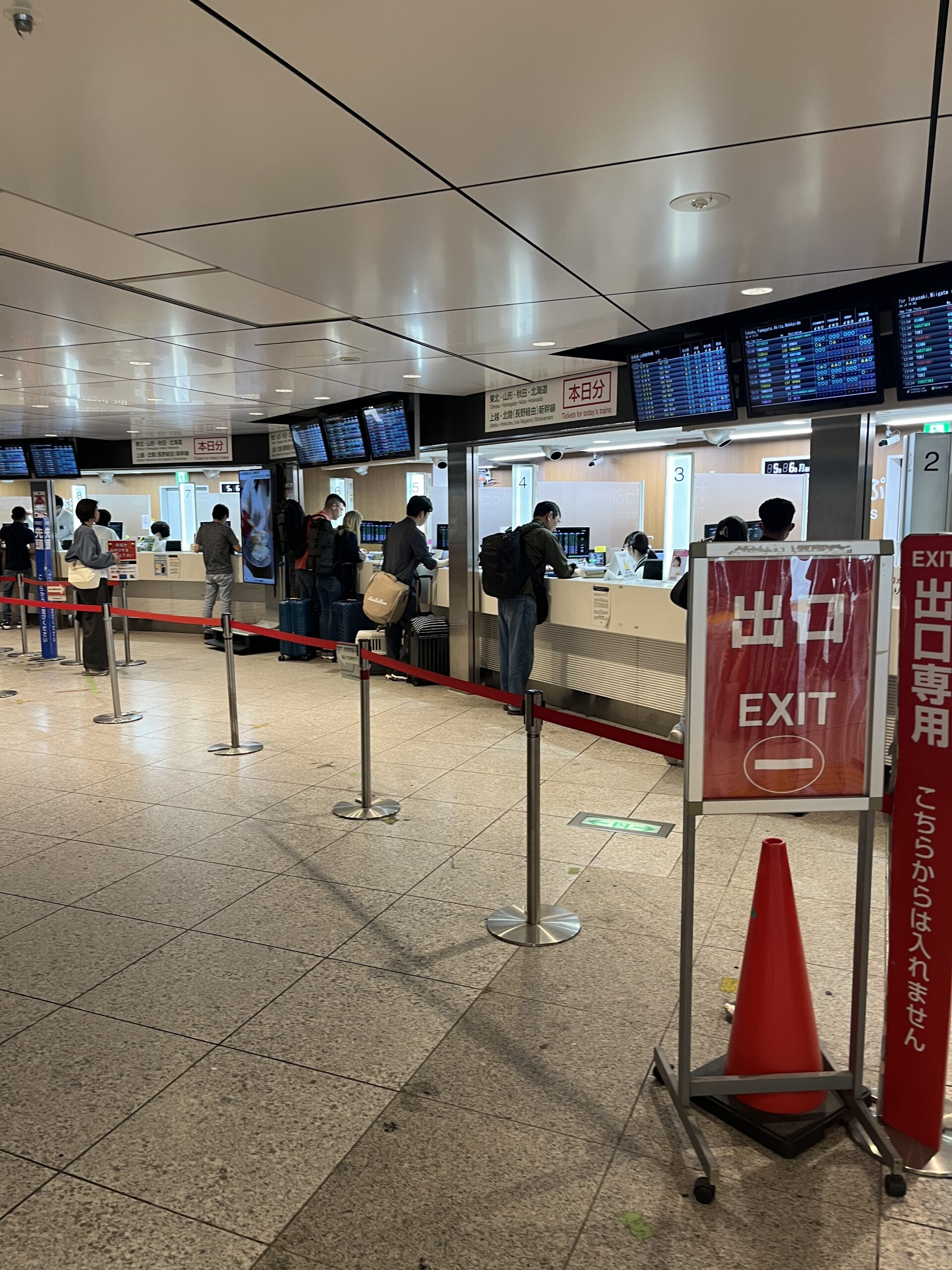
The dispute in no way detracts from the typical Japanese efficiency and precision, except that if you want to watch both the Tohoku and Tokaido Shinkansen trains, you have to get two different platform tickets. And you can not get your Tokaido Shinkansen tickets from the JR East ticketing machines. Although you can buy tickets for the Tokaido Shinkansen in any JR ticket office, you can not redeem tickets bought online in the JR East Shinkansen ticketing machines which you will now find in almost any train station. But despite both systems working in the same way – you fill in your information, select a seat, pay with your credit card, and get a barcode which you have to redeem in a ticket machine – the Tokaido Shinkansen tickets can only be redeemed in a JR Central ticket machine. Or JR Central ticketing office.
Opposite from the dome
There is an alternative, and it is to download the ticket to your Suica card, which in turn can be downloaded both to Apple and Android phones. If you have a Welcome Suica card you can get the ticket on it too, but then you have to go to a JR Central ticketing machine. And there is only one place you can find those in Tokyo: At the entrance to the Sanyo-Tokaido Shinkansen tracks.
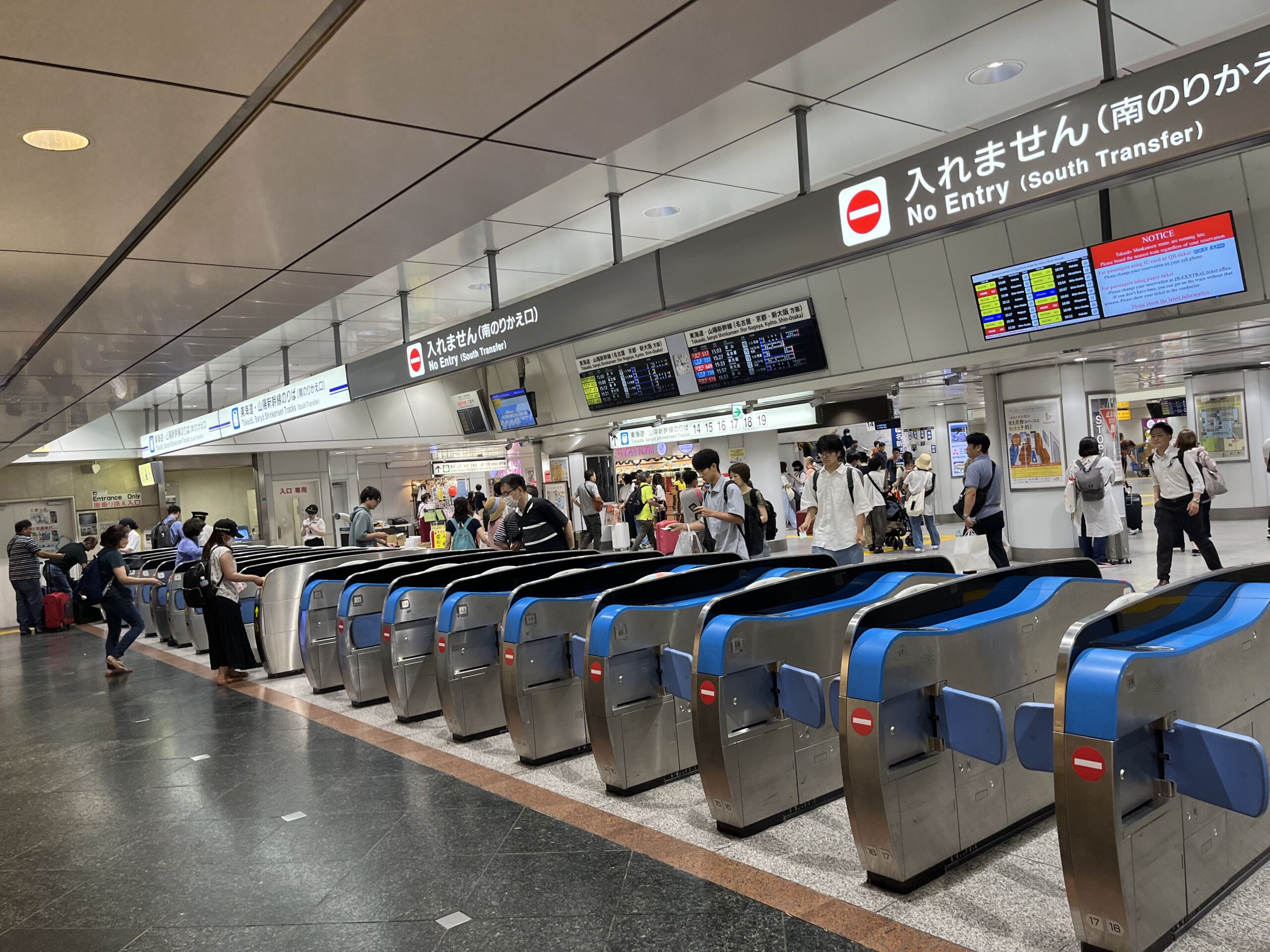
The Shinkansen track entrance is at the Yaesu end of the station, on the opposite side of the Maronouchi entrance. The Maronouchi entrance to the Tokyo station is where the dome is, and it is the side closest to the Imperial Palace. To get there you go through the station, either past the souvenir cookie and bento stands in the main corridor with entrances to the platforms; or the northern way past the ”Suzu” waiting room (and more cookie and bento stands).
If you take the northern route, you will end up close to the Tokaido Shinkansen entrance; if you take the southern route, you end up close to the Tokaido Shinkansen entrance. This of course also means that if you are exiting the Tokaido Shinkansen you can easily transit to the local JR lines; from the Tohoku exit you have to make your way past some more souvenir cookie stands to get to the local train platforms.
Same entrance but different
In both cases, the entrances look the same: a line of ticket machines; a ticket office selling tickets to the respective Shinkansen lines; and entrance gates where you insert your tickets. Even though you are passing from one zone in the JR system to another you need to touch your Suica card, after inserting the Shinkansen tickets in the transfer gate. Make sure to take both tickets. If you have a JR pass with a magnetic back, you can insert it instead of the fare ticket.
And then you are ready to board your train, probably after buying an ekiben to eat as you watch the countryside woosh past.
Related Articles
Warning: Undefined array key "sfsi_threadsIcon_order" in /home/veremosglobal/tokyoroomfinder.com/public_html/blog/wp-content/plugins/ultimate-social-media-icons/libs/controllers/sfsi_frontpopUp.php on line 165
Warning: Undefined array key "sfsi_blueskyIcon_order" in /home/veremosglobal/tokyoroomfinder.com/public_html/blog/wp-content/plugins/ultimate-social-media-icons/libs/controllers/sfsi_frontpopUp.php on line 170
Warning: Undefined array key "sfsi_bluesky_display" in /home/veremosglobal/tokyoroomfinder.com/public_html/blog/wp-content/plugins/ultimate-social-media-icons/libs/controllers/sfsi_frontpopUp.php on line 266

